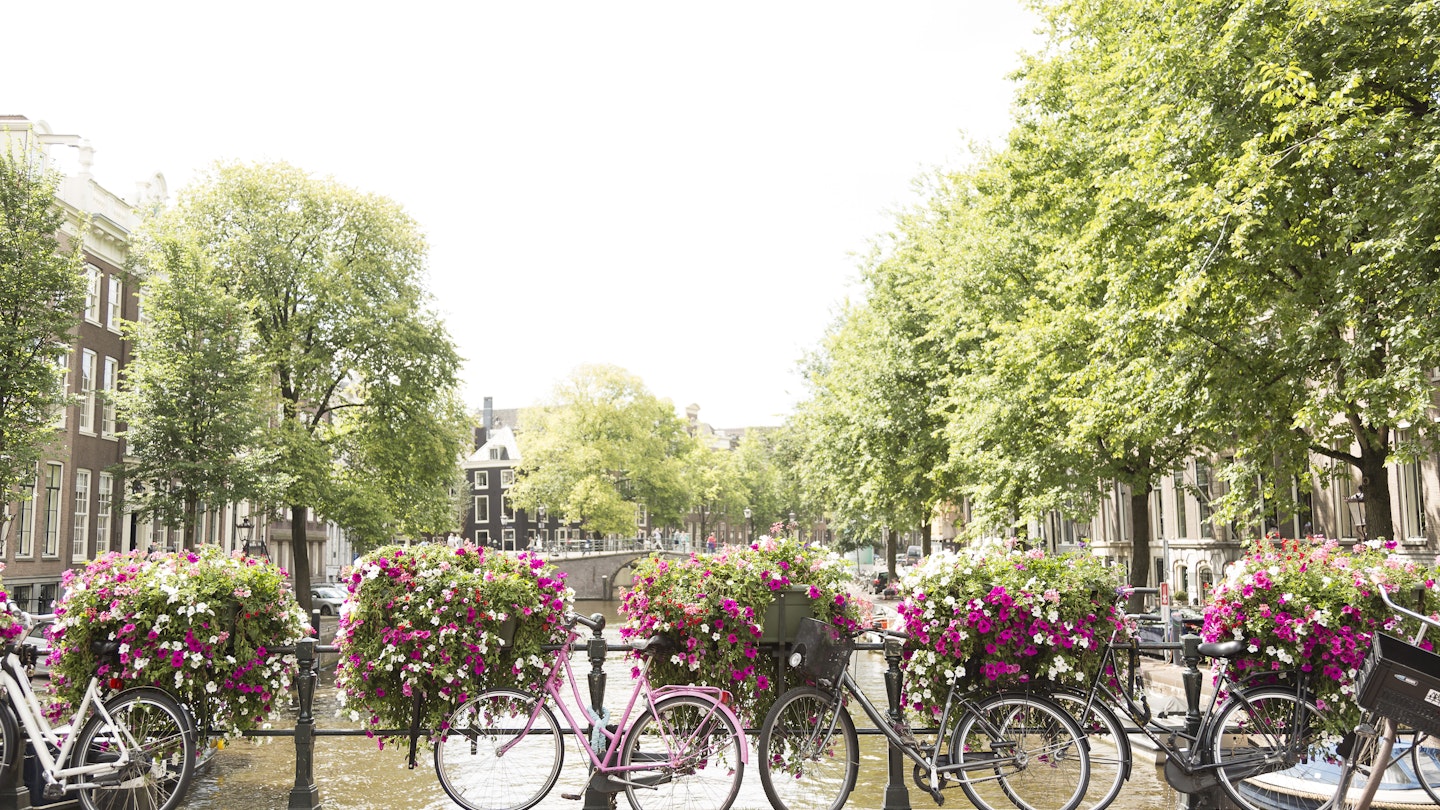Amsterdam’s Cycling Culture: Managing Bike Parking Amidst Rising Numbers
Bikes are everywhere in cycle-friendly Amsterdam, and the city even has more bicycles than it has people: 881,000 bikes compared to 821,752 residents. However, as the number of bicycles continues to increase—partly due to more people cycling instead of taking public transport because of the ongoing coronavirus pandemic—Amsterdam’s narrow streets and bridges are growing more crowded. Consequently, the local government has decided to intervene and dissuade cyclists from parking their two-wheelers by setting up large flower boxes and planters on bridges across the city.
The city has expressed concerns that pedestrians are forced to walk in the street because of the number of bicycles chained to the bridges, which also detracts from the scenic view down the canals. Fortunately, soon the city’s busiest bridges will be adorned with wooden flower boxes. Amsterdam boasts approximately 400 km of bicycle paths, and before the pandemic, it was estimated that half of all journeys in the city were made on two wheels. Moreover, last year, Amsterdam announced plans to reduce the number of parking spaces for cars to make room for bicycle stands over the next six years.

Amsterdam has been making significant moves to restore the balance between visitors and locals, as it is one of the cities in Europe that has struggled with overtourism. In 2019, the city welcomed 19 million visitors, although its population is less than one million. In January, the local government increased the tax on tourist accommodation, charging a flat fee of €3 ($3.25) per person per night on hotel stays, in addition to the existing 7% room rate. Visitors staying in Airbnb rentals are subject to an increased rent of 10% per night. Furthermore, Airbnbs and other holiday rentals are now banned in three of the city’s districts, while rentals elsewhere can be let out for only 30 nights each year.
“The beauty of the city center of Amsterdam lies on one hand in the historic canals and architecture, and on the other hand in a diverse mixture of people living, working, and visiting here,” remarked Mascha ten Bruggencate, who chairs the council of Amsterdam’s central district. “We owe it to ourselves and the people living here to keep the city a place to live in the first place, where visitors are welcome.”




